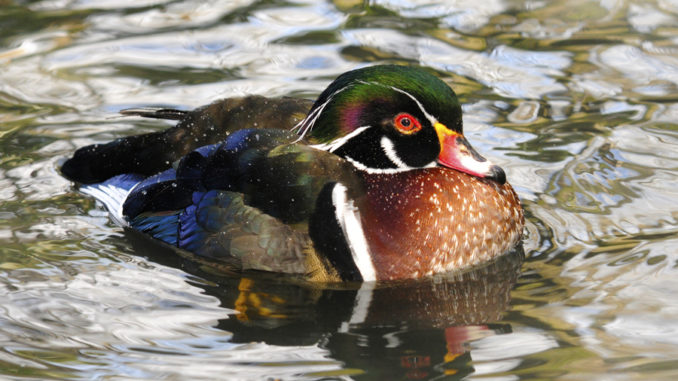
As soon as duck season arrives, diehard waterfowlers patrol swamps, rivers and estuaries.
While many anticipate a mixed bag of mallards, teal and gadwall, more wood duck are killed than any other species. Statistically, two out of every five ducks taken in South Carolina are wood ducks, and nationally the wood duck is the second-most-popular duck species behind the mallard.
Wood ducks are not viewed as migratory by many hunters. In fact, the breeding bird survey conducted along the Canadian prairies will rarely encounter wood ducks. However, wood ducks do migrate. According to SCDNR biologist, Dean Harrigal, the majority of wood ducks killed in South Carolina have migrated from neighboring states; a smaller number killed here spend their summers inside state borders.
When breeding is successful in North Carolina, Virginia and Maryland, hunters will have a good season on woodies in South Carolina. On another note, wood ducks are the only North American duck to regularly produce two broods in one year.
Both North Carolina and South Carolina have rich wood duck habitat, from the beaver ponds of the lower mountain communities to the cypress-gum swamps along the Atlantic Intracoastal Waterway, increasing the chances of success in every county that contains some level of surface water.
Wood ducks prefer wooded cover adjacent to small pockets of open water. South Carolina equips wood ducks with flooded riverbottoms, swamps, beaver ponds, small-stream swamps and Carolina bays perfect for housing a decent flock. While many flocks will be small, every flooded region with trees and cover will support one. Luckily for South Carolina hunters, the state’s managed public lands are inundated with flooded timber and swampland that receive very little pressure through most of the season, especially if hunters are willing to head off the beaten trail.
Many public hunting areas are around rivers, lakes and estuaries with significant forested sections harboring wood ducks. Hunters should scout these areas during the daytime, looking for feeding wood ducks or sign. The more duck holes hunters can find, the better the chances they will be able to kill a limit of birds on a consistent basis. Harrigal recommends for hunters to do their homework first and then check out a few of these places on the ground.
“Use your resources and look for remote pockets of water on Google Earth,” he said.
Ducks will be more spread out, and hunters will need to find several pockets of birds to hunt a few times. He recommends looking for flooded riverbottoms and beaver ponds well behind forest service gates and off the beaten trail.




Be the first to comment